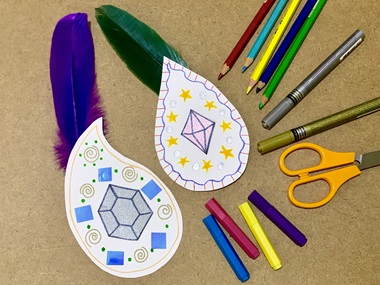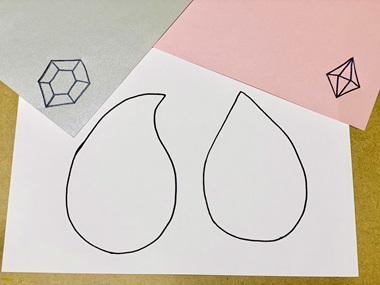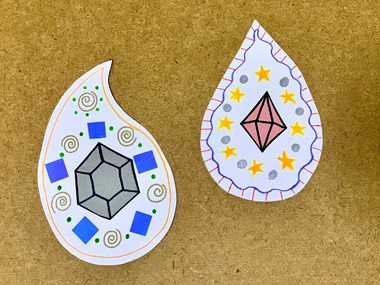This March, LET’S LEARN ABOUT…Sikhism!
What is Sikhism?
Sikhism is a religion that started around 500 years ago in Punjab, a region which covers part of India and Pakistan in South Asia today. It developed from the teachings of the ten Sikh Gurus (teachers). The first was Guru Nanak, the founder of Sikhism.
While there are many teachings, the Sikhs abide by three golden rules:
- Naam Japna: Remember God constantly
- Vand Chakna: Honest living
- Kirat Karna: Service and charity
Who are the Sikhs?
A Sikh is a believer in Ik Onkar, meaning one God and the teachings of the gurus, and deeply respects the Sikh holy book, called the Guru Granth Sahib.
Sikhs who choose to go through the ceremony called Amrit Sanchar are initiated into the Khalsa, a group of pure, committed believers. They are thereafter known as Amritdhari or Khalsa Sikhs. Khalsa Sikhs strictly maintain the articles of faith, known as the five “K”s – kesh (uncut hair), kada (bangle), kanga (comb), kachha (shorts), and kirpan (steel dagger).
Some male Sikhs have Singh ("lion/king") as their middle or last name; likewise, female Sikhs might have Kaur ("princess") in their names.
Where do Sikhs worship?
The Sikh place of worship is called a gurdwara (read as "gur-dwaah-raah"). It houses the Guru Granth Sahib. The gurdwara is open to people of all religions, genders, and ethnicities. There are seven gurdwaras in Singapore, the largest being the Central Sikh Gurdwara on Towner Road.
Vesakhi – the Sikh New Year
One of the most important dates in the Sikh calendar is Vesakhi, the Sikh New Year, which falls on 13 or 14 April every year. It celebrates the day when the Khalsa was first established by the 10th Sikh Guru, and Sikhs started using the surnames Singh and Kaur.
Vesakhi celebrations are typically held throughout the day at gurdwaras. Part of the cultural celebrations include large fairs with music and dance, athletic competitions, and displays of gatka, the Sikh martial art. Festivities might end with langgar (communal free kitchen), which provides free food to everyone.
OBJECTS FROM OUR COLLECTION
These two objects will be on display at our Level 2 Ancient Religions Gallery from May 2022 onwards. Let’s take a sneak peek of them now!
The Ninth Sikh Guru, Tegh Bahadur
India, Punjab, late 19th century
Opaque watercolours with gold on paper
Gift of the Singapore Sikh community, 2021-00443
The Ninth Sikh Guru, Tegh Bahadur
India, Punjab, late 19th century
Opaque watercolours with gold on paper
Gift of the Singapore Sikh community, 2021-00443
How many men can you count in this painting? The one seated is the Sikh Guru Tegh Bahadur (1621–1675), receiving two visitors. Standing behind him is his attendant. Guru Tegh Bahadur is the ninth of ten Sikh gurus who founded the Sikh religion. What else do you notice about the men? Describe how they dressed?
This painting was made about 120 years ago, and might have been bought in a marketplace in Amritsar, the holiest city of the Sikhs in India. It is about the size of your school textbook or worksheet. Do you like the colours used? It was painted using gouache, which is thick watercolour paint.
Cuirass plates (Char-aina)
Pakistan, Lahore, around 1820
Steel, gold, velvet
Largest piece: 34.5 x 26 cm
2021-00444
Cuirass plates (Char-aina)
Pakistan, Lahore, around 1820
Steel, gold, velvet
Largest piece: 34.5 x 26 cm
2021-00444
This is a rare set of steel plates called “char-aina”, which means “four mirrors” in Persian. They are worn as part of a cuirass (body armour). The large plate is worn at the front, and three smaller plates are for the back and sides. They would be held together by leather straps and buckles when worn.
The plates are padded with velvet, and the borders are decorated with gold bands with flower and vine motifs. The method of inlaying or fitting gold into steel is called "koftgari".
Char-aina are believed to be able to repel weapons, harm, and evil, thus protecting the wearer. This set was probably worn for parades and ceremonies; those worn in battle would also usually have protective writings on them.
CREATE
A kalgi (read "kaal-gee") is a turban ornament that was considered a sign of royalty. It is normally worn at the front of a turban, and decorated with a feather. In paintings and drawings, Sikh Gurus are typically shown wearing kalgis on their turbans.
Follow the steps below to make this kalgi-inspired craft. Tag us @ACM_SG #LearningatACM to share your creation!

You may use these materials
- Card paper
- A pair of scissors
- Acrylic gems, glitter, stickers, colouring materials, and/or other decorative items
- Craft feathers
- Tape or glue
Follow these steps


Craft done by ACM staffer Jeannica Aw
- Cut out a teardrop-shaped design on a piece of card paper. You can use a template or draw it freehand.
- Use gems, stickers, or colouring materials to decorate the kalgi. You can draw gems on coloured paper and cut them out to use too.
- Attach a feather to the top of the kalgi with glue or tape.
- Your kalgi craft is ready!
EXPLORE
Head to NHB’s one-stop heritage portal Roots.sg to read more about Sikhism:
Vesakhi
Central Sikh Gurdwara
Want more of these resources? Come back to learn new things every month.
Missed a monthly post? Not to worry, we keep past topics here for you.
What else would you like to learn about? Tell us here.
There’s more!
Check out other videos and download e-resources inspired by the objects in ACM’s collection.